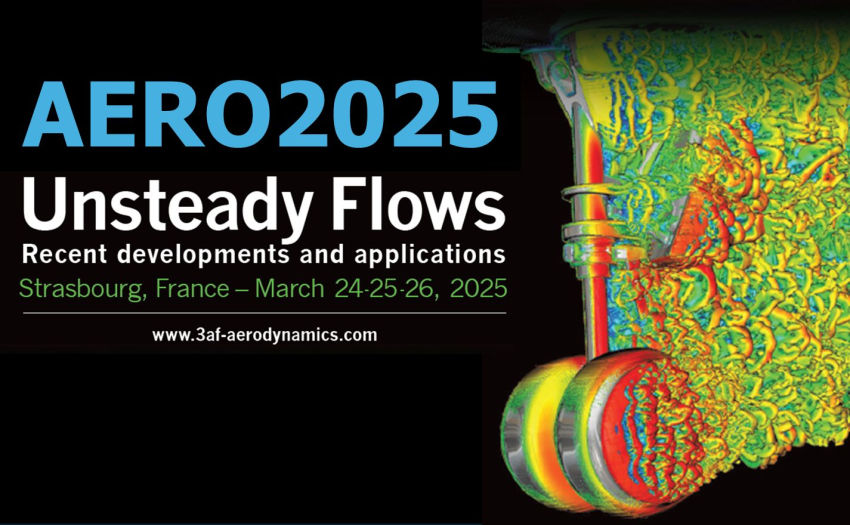The 3AF International Conference on Applied Aerodynamics focuses each year on a different topic that is representative of the present concerns in the field of aerodynamics. In 2025, the conference will focus on unsteady flow phenomena which are critical across various fields of aerodynamics. They have a significant impact on the external aerodynamics of aircraft and helicopters, the internal aerodynamics of propulsion systems and play a crucial role in the performance of missiles, launch and ground vehicles under critical conditions.
Recent years have seen remarkable progress in our understanding and modelling of unsteady flows. The development of advanced computational tools and high-fidelity simulations has revolutionised our approach, allowing us to address these phenomena at a fundamental level. Modern computational and experimental methods now enable us to capture the transient behavior of unsteady flows with unprecedented accuracy, providing deeper insights and more reliable predictions.
This conference aims to highlight the most recent developments and their applications across various fields. We will explore how advanced computational techniques and experimental methods are being used to address complex unsteady flow challenges in aerospace (both military and civil), in transportation, and in energy.
This 59th Edition is organized by the 3AF Technical Committee “Aerodynamics" will be hosted by the ICube Laboratory of Strasbourg University.
APPLICATION DOMAINS
• Aircraft (fixed-wing, morphing wing, control surfaces, landing-gear, engine-airframe integration, air intake…)
• Rotorcraft (helicopters, tilt rotors) and Urban Air Mobility vehicles (drones, eVTOLs)
• Turbomachinery and Propulsion Systems (gas turbines, compressors, fans, propellers)
• Space Launchers
• Ground Vehicles (automotive, train)
• Maritime Vessels (ship hull, sails)
• Wind Energy and Industrial Buildings (wind turbines, ventilation systems, heat exchangers)
MAIN TOPICS
The following items will be considered to address the above challenges (the list not being exhaustive):
• Aerodynamic design and optimization
• Take-off, Landing and off-design conditions (Gust, buffet…)
• Surge effects, reignition
• Transition prediction and control
• Flow separation and control
• Loads and vibro-acoustics environments
• Flight Stability & Control
• Aeroacoustics and noise reduction
• Flow-structure interaction, unsteady loads and aeroelastic effects (e.g. flutter, LCO)
• Unsteady heat transfer, flow simulation coupled with heat transfer models
• Experimental techniques for unsteady flows: Wind tunnel tests, visualization and measurement
• Numerical methods for unsteady simulations (CFD, High-performance computing…)
• Turbulence modelling for unsteady flows (multi-scale modelling, URANS, hybrid RANS-LES, LES…)
• Uncertainty quantification in simulations
• Data-driven methods and Machine Learning applications in unsteady flows




 AERO2025_Call-for-Paper
AERO2025_Call-for-Paper


